Cruise ships look absolutely serene as they sail through calm waters passing tropical paradises or deep fjords.
What you can’t tell from a photo is that they can also be loud. Really loud. I mean ‘knock your socks off loud’ when they blow their horns.
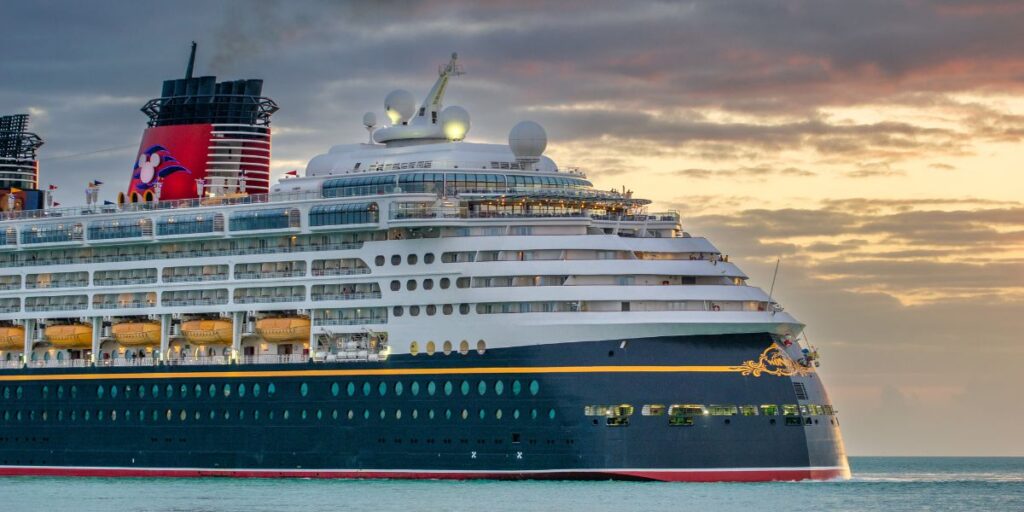
Now, this is (mostly) nothing to worry about and only happens infrequently so it won’t stop you from enjoying a relaxing break on board the ship.
But they do have the potential to surprise and they can sound a bit alarming if you aren’t expecting them or don’t know what they mean..
Why Cruise Ships Blow Their Horns
Cruise ships blow their horns to communicate with other vessels. It’s a simple way to broadcast their intentions to anyone within earshot without relying on modern technology. Usually, the horns will indicate the planned movement of a ship, but they can also be used in an emergency. Or sometimes, just for fun.
The use of the ship’s horn is an important part of the navigation of a ship. By using internationally accepted codes any other sailor in the area will know where a ship is heading simply from the sound of the horn.
Cruise ship captains also have a sense of fun, and one of the most famous reasons to sound the horn is to play out a musical horn battle against another nearby cruise liner. So the ship horn sound can just be a bit of a friendly rivalry playing out.
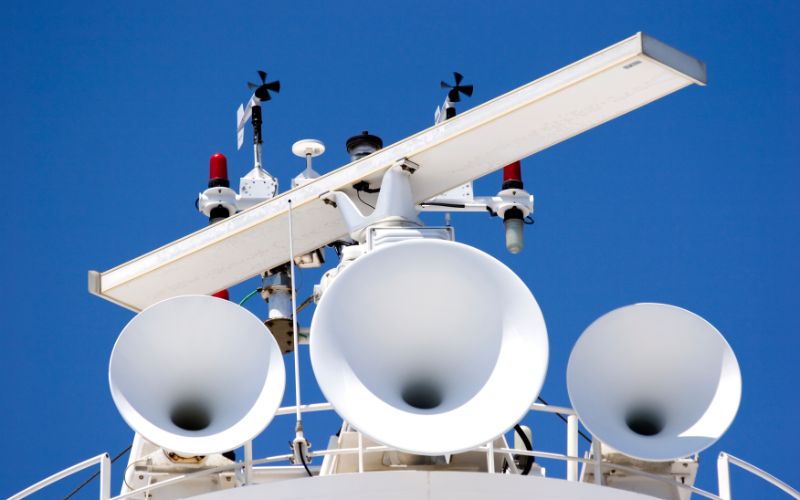
There Are Four Main Reasons Why a Cruise Ship Will Blast Its Horn:
1. Navigation Signal
The main purpose of a ship’s horn is to inform other boats of its planned movements. By using different horn signals, the captain of a cruise ship is able to easily inform others of where they’re heading.
2. Horn Battle
This is a more frivolous use of the horn. The captain will play tunes on their horns in a friendly ‘battle’ against other cruise ships as they leave a port. So don’t worry, not all ship horn signals are serious!
Sometimes this is a simple long blast, but some cruise ships play music through their horns! For example, the Disney cruise ships often blast their horns to the tune of ‘When You Wish Upon A Star’. The latest ships have a range of tunes to pick from:
3. Warning
Cruise ships can use their horns to warn of imminent danger or to tell of an onboard emergency.
4. Fog
Cruise ship horns are used during thick fog to alert other vessels to the location of a ship.
The different purposes of the horn can usually be determined based on its pattern as there are established international codes to enable ships to communicate with one another.
What Cruise Ship Horn Blasts Mean
Horn blasts from any ship always mean the same thing, but exactly what this is depends on the exact sound that’s used.
The chances are that most cruise ship passengers aren’t familiar with this code. Well, here’s your chance to show off and tell your passengers what your cruise ship’s horn sounds mean!
There are six different horn signals that are used to communicate your ship’s intentions. Generally speaking, the horn blasts will be telling other ships where you are heading. This is an important way of reducing the risk of collision, particularly when you are near the port and there are lots of other boats around.
But sometimes, the horn is used to also warn passengers, so you do need to be aware of the ship horn meaning.
My friend John is a ship’s pilot and he’s been able to provide some really useful info on these signals. The signals below are covered as part of Rule 34 from the International Regulations for Preventing Collisions at Sea 1972 (Colregs).
The signals will all be supplemented by a morse light.
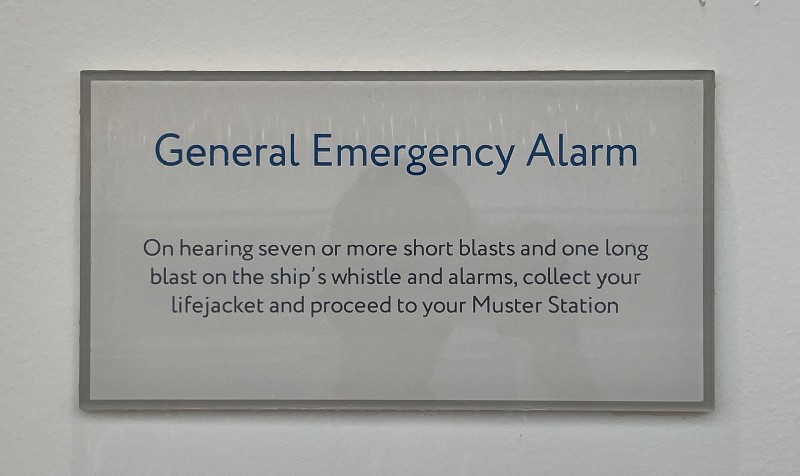
One Long Blast
This should be the first signal you hear. A single blast lasting about 4-6 seconds means that your ship is leaving the dock. It tells everyone around to be aware that the ship is moving and it’s also a time for you to celebrate that your trip has started!
One Short Blast
If you are near the port, in what is known as inland waters, this signal indicates that the cruise ship is changing course to starboard (right). When you are out at sea in open international waters, the same one short blast signal is used to show that your ship intends to pass another on its port side (left).
Read more: Port & Starboard – Which is which and why?
Two Short Blasts
This is the opposite of one short blast. If you are near the shore your ship will be turning to its port (left) side. When out at sea, it means you will be passing another on its starboard side.
Three Short Blasts
This signal means that your ship is using astern propulsion. It often means the ship is going backward, but not always – it can just mean the ship is slowing down by using thrust in the opposite direction.
This signal most likely means that you are reversing out of the dock, but the signal is the same wherever you are. Signals can be combined, so if you are backing out of a dock you will hear a long blast (for leaving ) followed by three short ones (meaning you are reversing).
Five Short Blasts
This signal means danger. It could be used in a number of situations, including as a warning to other ships if a collision is imminent, or it can be used if the captain doesn’t understand an approaching boat’s intentions.
Seven Short Horn Blasts Followed By One Long Blast
Hearing five blasts is bad, but this is the one that you really don’t want to hear (and are very unlikely to). This horn is used to indicate a general emergency on the ship and will probably be accompanied by alarms and visual indicators.
Be sure to follow the instructions of the crew if you are ever in this situation. They will likely expect you to head back to your cabin, put on warm clothing, collect your lifejacket and any medication that you need and head to your muster station.
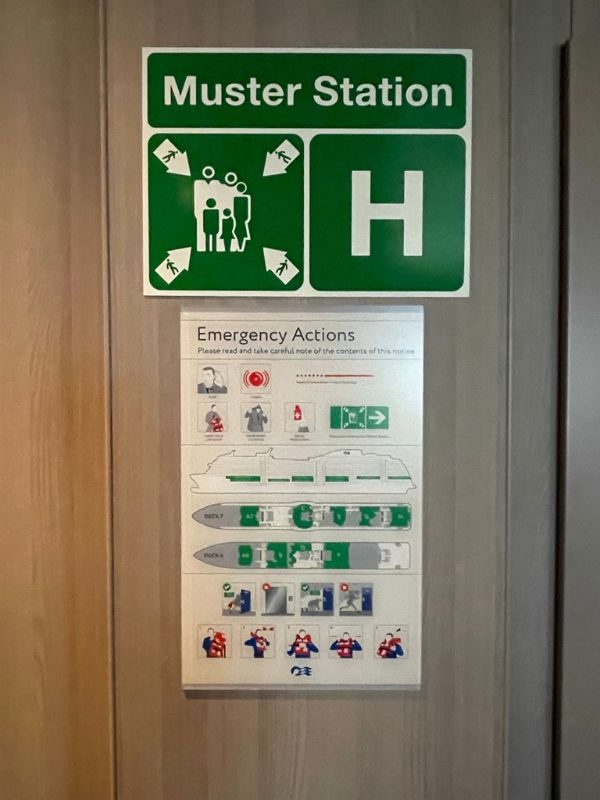
Cruise Ship Fog Horns
In addition to these formal signals, the horn can be used as a fog horn in conditions when there is low visibility. In this situation, the ship will blow its horn quite frequently to alert other vessels to its location, but without a distinct signalling pattern.
This is covered by Rule 35 of the regulations mentioned above. There will normally be one long blast of the horn, with intervals not exceeding two minutes. This will keep going while the visibility is limited.
When I cruised to the port of Guernsey in thick fog onboard Enchanted Princess, the fog horn sounded approximately every minute for about five seconds. This was loud enough to be heard in the cabins in the early morning.
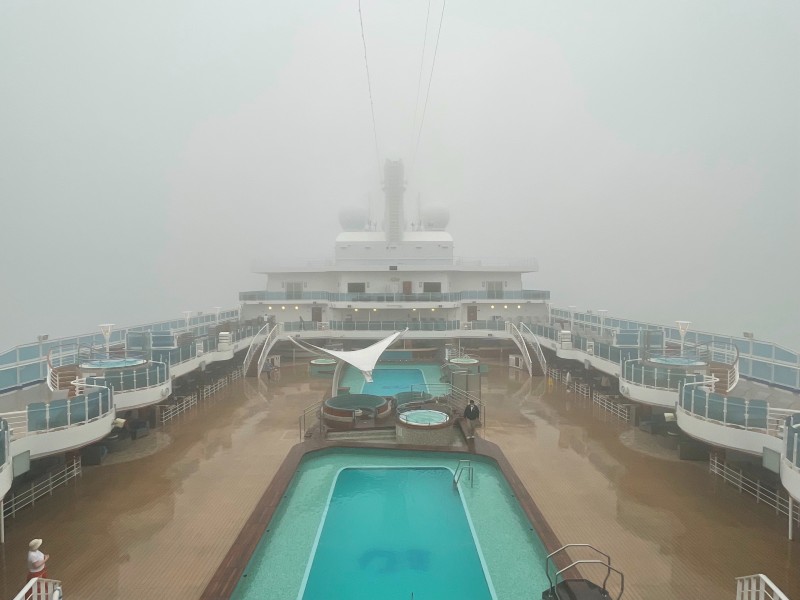
Those with balcony cabins towards the front of the ship are more likely to be disturbed by the fog horn than those with inside cabins or towards the back of the ship.
Cruise Ship Horn Battles Explained
This is the time that you really do want to hear a cruise ship’s horn. There’s no need to nervously count the blasts (hoping it doesn’t go over 3) or sit there trying to remember if starboard means left or right (it’s right). This is the time when the horn is blasted just for fun. Yep, just for fun, and maybe a little bit of competition.
A cruise ship horn battle is not really a battle at all. It’s better thought of as being a friendly game played between two cruise ships that try to outdo each other with bigger and better tunes played out on their horns.
It’s all very friendly, and there is no real winner; it’s just a nice way for two enormous vessels to communicate with each other in a fun way. It’s most commonly done as a ‘goodbye’ when one ship is about to leave the port, so it’s just singing to the other ship as a fond farewell.
Why Cruise Ships Have Horn Battles
Cruise ships have horn battles for fun. There is no real purpose to them except to entertain passengers and people in the port. They’re generally carried out as a goodbye to the other ship and to the port they’re leaving.
Disney Cruise Line has embraced the horn battle more than any other cruise line and they have the most musical horns and most impressive horn battles.
Watch this video to hear the horn battle between Disney Wish and Disney Dream at Disney Cruise Line’s private island, Castaway Cay…
Cruise Ship Horn Numbers
All cruise ships have horns to assist in navigation, however, there is no set number of horns for a cruise ship. The number of horns will vary depending on the design of the ship with some having one and some having multiple horns, each playing different notes.
Disney Cruise Line has taken cruise ship horns to the next level and their ships have multiple horns that harmonize with each other. This enables them to play famous songs using the Disney cruise horn, “When You Wish Upon A Star” and “Do You Wanna Build A Snowman” are particular favourites.
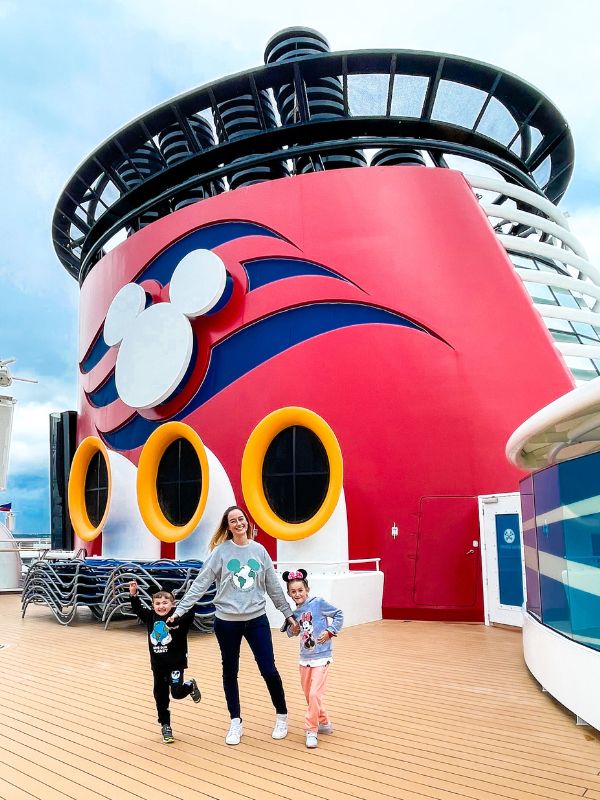
Cruise Horn Volume
Cruise ship horns are capable of producing 115 decibels – that’s as loud as a rock concert. So they’re very loud. This is because they need to be heard two nautical miles away in foggy conditions.
Fog can reduce the distance that sound can travel, so cruise ship horns will be extra loud to compensate for this.
The horn will indeed seem very loud if you are on board rather than two miles away – especially if you are outdoors at the front of the ship! Many people cover their ears when they hear the ship’s horn. It’s advisable to cover small children’s ears so that they don’t get upset or suffer an earache.
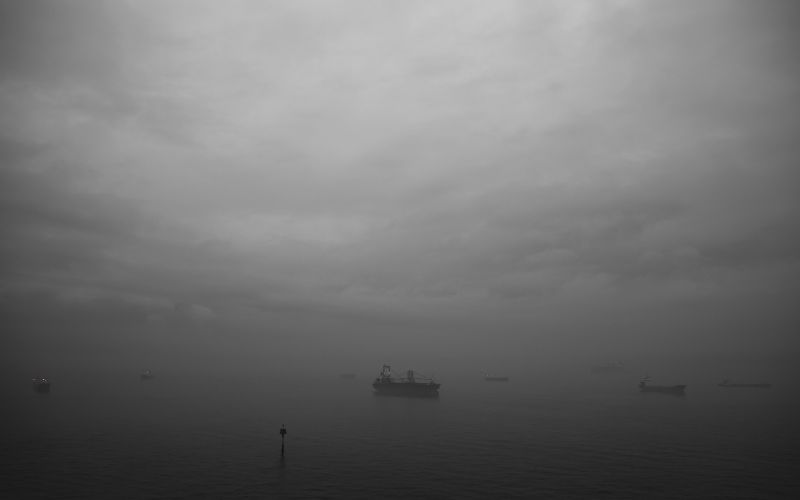
They Need To Be Loud!
Cruise ships’ horns need to be loud as they act as a warning to other vessels. They can be used in fog to alert others to a ship’s location or used in an emergency, so it’s essential that the horn can easily be heard as far as two nautical miles away.
Due to their huge size, cruise ships are pretty slow to stop or turn, so they need to be able to warn other ships that are quite far away. I am sure that it also has a kind of unofficial “look how big I am. Get out of my way” effect. I certainly wouldn’t be hanging about in my small boat with a giant cruise ship bearing down on me!
Read more: Invergordon’s Cruise Ship Horn Tradition in Limbo
The Bottom Line
So there you have it! You now know all about cruise ship horns and why they might be used. After a few days on board a cruise ship, I am sure that you will get used to the sound of them blaring out (occasionally) and I hope that you get the chance to impress your fellow passengers by telling them exactly what each signal means!
Related Posts
- 21 Secret Codes On Cruise Ships Explained
- Do Cruise Ships Have Enough Lifeboats?
- What Happens If You Jump Off A Cruise Ship?
- How Many Cruise Ships Have Sunk?

Jenni Fielding is the founder of Cruise Mummy. She has worked in the cruise industry since 2015 and has taken over 30 cruises. Now, she helps over 1 million people per month to plan their perfect cruise holidays.

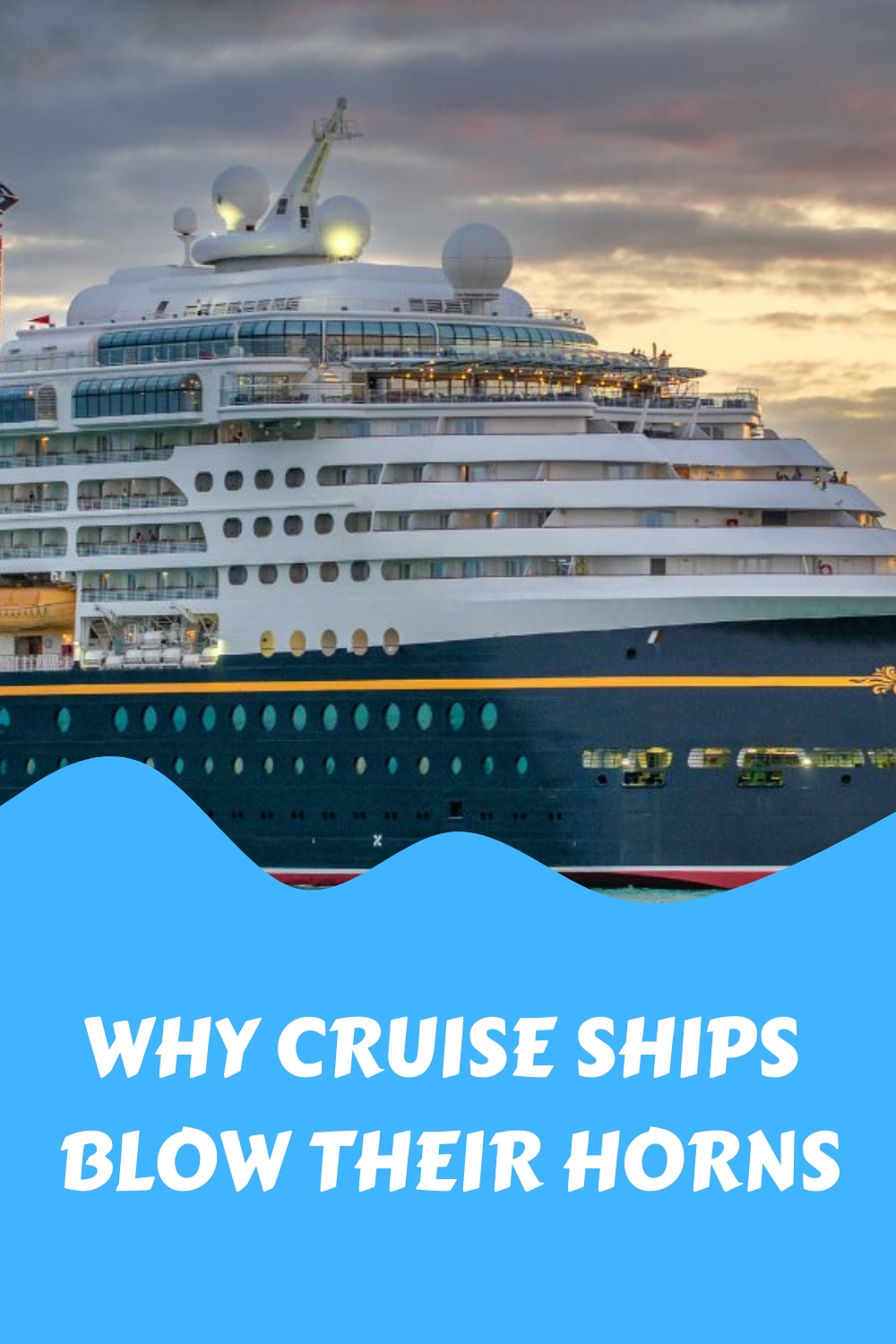

How so know if a cruise ship horn fight, emergency or manoovring cymbal. Sound very confusing.
A general emergency alarm is indicated by these seven short and one long blasts of the ship’s horn. The crew may have to leave the ship due to an onboard fire, a grounding, a collision, or other circumstances.
After one prolonged blast, the boater alerts nearby vessels that it is leaving the slip or dock.